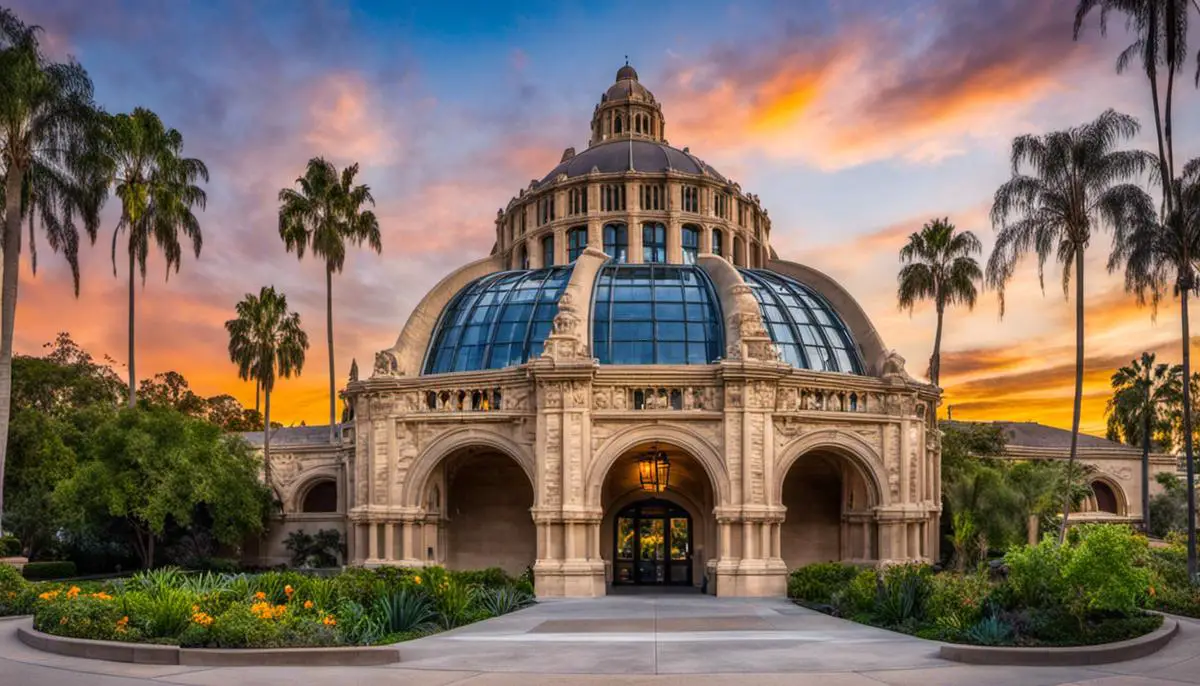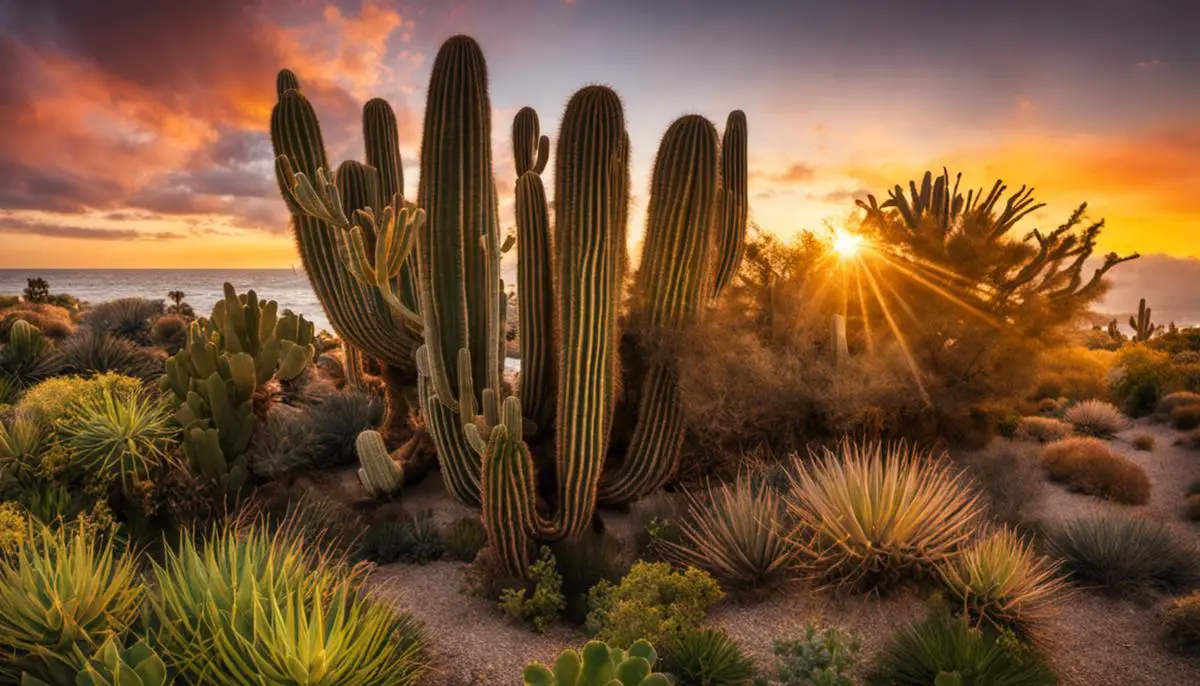Welcome to your informative journey about the San Diego Natural History Museum, a cherished institution with a rich legacy, where history comes alive. As we delve into the museum’s story, you’re about to embark on an exciting tour that’s not just about past exhibits, but the mark they’ve left on our understanding of natural history. We will navigate through the museum layout, highlighting facilities that ensure a convenient visit. Our exploration will extend into the museum’s key exhibits and collections, offering a glimpse into their sphere of knowledge, along with the educational programs that enrich the experience. Finally, don’t forget to make note of the practical information, which ensures a seamless visit.
Understanding the Museum’s History
Founding of the San Diego Natural History Museum
Founded in 1874, the San Diego Natural History Museum is California’s oldest scientific institution. Originally dubbed as the San Diego Society of Natural History, the museum was founded by a group of amateur naturalists who were excited about the rich biodiversity found in the Southern California region. The initial aim of the institution was to promote a thorough knowledge of the nature and natural resources in southern California and Baja California.
Fire and Restoration
The original building faced a disastrous fire in 1915, which resulted in the loss of many collections. Yet, the tragedy sparked a wave of public support, leading to the construction of a new museum building in San Diego’s Balboa Park. The new architecture was inaugurated in 1933 and remains the cynosure of the museum.
Preservation of Biodiversity
Focused on the preservation of biodiversity, the San Diego Natural History Museum helped establish and currently manages the Otay Mesa and the Elfin Forest Natural Reserve. The organization’s landmark achievements also include the establishment of various botanical gardens, which serve as a repository for numerous endangered plant species.
Exhibits and Research
The Museum’s exhibits have evolved over the years, bringing specimens and stories from around the globe to San Diego County. Current exhibits include the infamous dinosaur fossils, Southern California’s biodiversity display, ancient sharks, and a comprehensive array of the region’s native peoples’ archaeological records. The museum also boasts of being one of the few institutions worldwide that holds a near-complete collection of Pleistocene mammals.
Museum Highlights
Among the many highlights that enchant visitors are the life-size animatronic dinosaurs, the 3D theater – the Subaru 3D Experience that screens nature films – and the Elephant Odyssey Exhibition, which recreates the Pleistocene-era San Diego.
Visitor Guidelines
Located in the breathtaking Balboa Park, the San Diego Natural History Museum, also referred to as ‘The Nat’, generally operates between 10 AM and 5 PM, with the last admission granted at 4:30 PM. However, to ensure you catch it open, keep yourself up-to-date with any schedule adjustments due to ongoing events by checking the museum’s official website. With the museum situated amidst the breathtaking natural beauty, it is highly recommended that you take some time out to explore the park’s gardens, well-trodden trails, and other attractions. If you’re a student, a senior citizen, or personnel from the military, you’re in for a treat, as ‘The Nat’ offers special discounts. Don’t conclude your visit before making your way to the rooftop terrace that offers a grand view of Balboa Park!

Navigating the Museum: Layout and Facilities
Conveniently positioned on El Prado Street in Balboa Park, ‘The Nat’ has been a prime cultural attraction since its initiation. The four-story structure showcases an impressive collection of exhibits amidst diverse settings, each floor offering a distinctive experience to satisfy your quest for knowledge on natural history.The lower level houses the Charmaine and Maurice Kaplan Theater, where guests can watch nature-inspired 2D and 3D films. It includes the museum store and access to the captivating dinosaur fossils exhibit.The first floor is home to the museum’s main entrance and the Eleanor and Jerome Navarra Special Collections Gallery, a dedicated space exhibiting extraordinary and newsworthy items from the Museum’s research departments.The second floor features prominent displays like the Fossil Mysteries exhibit, exposing San Diego’s prehistoric past, and the Live Animal Encounters, a place for a closer look at live species, and the Giant-Screen Theater with 3D films on nature and wildlife.The third floor welcomes you with the Camp-O-Logy, where children can camp indoors imagining nature, and the San Diego’s biodiversity is beautifully showcased in the Coast to Cactus in Southern California exhibit.Lastly, the fourth floor hosts the Birds and Mammals of Southern California and the Skulls exhibits, both of which delve deep into native species.The museum does not have its own parking facility, but free parking lots are within walking distance, most notably near the Bea Evenson fountain and the Organ Pavilion.The museum is ADA (Americans with Disabilities Act) compliant, with ramps and elevators to accommodate all visitors. Wheelchairs are also available upon request from the admissions desk.The Nat provides facilities to ensure the comfort and satisfaction of all visitors. Restrooms are on each floor, with diaper-changing stations located on the lower level and the 3rd floor. Guests are welcome to sit, rest, and even picnic at the atrium on the 3rd floor.For those wishing to dine, The Flying Squirrel Cafe on the lower level offers locally sourced ingredients in their preparations. For snacks and quick bites, vending machines are located on the same floor.In addition, the museum offers free Wi-Fi, ensuring you remain connected as you learn about natural history.The museum store, located on the lower level, offers a wide variety of souvenirs, books, children’s toys, and unique artworks associated with natural history.To ensure a smooth and enriching visit to the San Diego Natural History Museum, understanding the museum’s layout and available exhibits is essential. Be sure to wear comfortable attire and footwear, as there will be a considerable amount of walking involved due to the museum’s vastness. Ideally, arranging a full day for your visit allows for a leisurely exploration and full appreciation of each exhibit without feeling pressed for time.
Exploring Key Exhibits and Collections
The “Coast to Cactus in Southern California” Exhibit
One of the highlights of your visit will undoubtedly be the “Coast to Cactus in Southern California” exhibit. Here, you’ll embark on a virtual journey through the diverse landscapes of southern California, traversing the coast all the way to the desert. This immersive exhibit showcases the unique biodiversity of the region, including many plant and animal species that are exclusive to this part of the world. Interaction is encouraged, with features like a riveting virtual flyover of the terrain and an engaging reptile discovery station.
Fossil Mysteries Exhibit
The next must-see exhibit is the Fossil Mysteries, which offers a unique perspective on the ancient history of the Earth. This exhibit showcases a wide array of fossils from dinosaurs to ancient sea creatures, demonstrating the immense geological changes that have occurred over millions of years. An interesting story behind this exhibition is the presence of a fossilized skeleton of a megalodon, a gigantic prehistoric shark, which was painstakingly put together by the museum’s paleontologists.
Skull Exhibit
Another notable exhibit is the Skull Collection. This display consists of over 200 animal skulls from a variety of species. The exhibit gives key insights into the anatomy and functionality of skulls in different animals, offering a comparative perspective on evolution. It gives visitors a unique insight into how different animals adapt to their environments. Fun-fact: The skull exhibit holds a number of exotic specimens, including a walrus, a giraffe, and a gorilla.
Water: A California Story Exhibit
Another important exhibit to see is the Water: A California Story. The exhibit provides a look at California’s complex relationship with water, highlighting its importance to the area’s diverse ecosystems and the challenges faced by the state in managing this crucial resource. Fascinatingly, the exhibit explores the myriad ways animals and plants have adapted to California’s varying water availability in different regions.
Theodore Roosevelt Exhibition
Finally, visitors should not miss the exhibit dedicated to Theodore Roosevelt, America’s 26th president. The exhibit examines Roosevelt’s contributions to environmental conservation and his significant connection with San Diego. Did you know that Roosevelt’s visit to San Diego in 1915 was celebrated with an elaborate city parade?
Dynamic Exhibitions
While visiting the San Diego Natural History Museum, fondly referred to as theNAT, be sure to take advantage of the dynamic exhibitions that are on offer. These rotating exhibits provide insight into a variety of natural history subjects. Engaging in interactive activities, participating in games, and watching educational films are all ways in which you can enhance your museum experience.

Activities and Educational Programs
Engage and Learn at San Diego Natural History Museum
At the San Diego Natural History Museum (theNAT), the world of natural sciences comes alive with a wide range of educational programs, workshops, and interactive exhibits. Catering to all age groups, these activities make learning exciting and engaging.
At theNAT, educational programs are designed to instill a love for learning and deepen the understanding of nature. Offerings include native wildlife studies, summer camps, guided tours, workshops and crafts, providing abundant learning options for all ages.
Of particular note are the school programs, which support the curriculum with a focus on current natural history and science topics. Students can interact with exhibits and attend expert-led lectures and demonstrations.
Family Science Saturdays is a fun-filled program offering hands-on learning around various science topics. It’s a great way to bond as a family while fostering a love for science.
The nature-lover will appreciate the Museum’s Nature to You Loan Program, which allows detailed study of the museum’s specimens at home or school for a week.
Adults can enjoy theme-based lectures, workshops, and events that provide insightful perspectives on various ethical, historical, and scientific topics. Experts in the respective fields often lead these sessions.
There’s also the City Nature Challenge where cities around the globe compete to document the most number of species, and the Wheelhouse adult classes for in-depth explorations of art, culture, and nature.
Interested in exploring local nature? The Canyoneers, the museum’s trail guide group, provide free guided walks around San Diego’s diverse ecosystems.
Not to forget, temporary, rotating exhibits on various topics from photography to paleontology are also hosted throughout the year, adding to the multitude of learning opportunities.
With its diverse educational programs and activities, the San Diego Natural History Museum provides an enriching mix of learning and exploration opportunities, instilling the visitors with a deeper understanding and appreciation for the natural world.

Practical Information: Hours, Tickets, and Tips
Planning Your Visit to The Nat: Essential Information and Tips
Considering a visit to the San Diego Natural History Museum, or The Nat? The opening hours can vary depending on the season, and special events. Although generally, the museum opens at 10 AM and closes at 5 PM, it’s advisable to check the website for the most accurate times before making your plans.
Tickets
Regular adult tickets are priced at $19.95, with discounts available for seniors, students, and military members. Children’s ticket prices range depending on age, and toddlers below two years enter for free. On specific days local residents with ID can enjoy free entry, and active-duty military members get in free regardless of the day. Do check the exact days and details on the museum’s website.
Museum Memberships
A membership at the museum offers a slew of benefits including free general admission all year round, discounts on exhibitions, at the museum store, on summer camps, as well as exclusive event invitations.
Maximizing Your Visit
Got only one day? Plan your visit for a weekday morning to avoid the high footfall of weekends and afternoons. Allocate several hours to take in everything, from dinosaur fossils to bird collections, and rare minerals to interactive exhibits.
Accessibility details you might want to note: the museum is wheelchair-friendly, service animals are allowed, and parking is available albeit might fill up quickly on popular times.
The museum does not allow food from outside, but there’s a café that sells food and drinks. You could also picnic at Balboa Park that encircles the museum.
Before you leave, don’t miss out on the gift store which houses earth-inspired gifts and educational toys and books. With informed planning, your journey through the remarkable story of life on Earth at The Nat would indeed be unforgettable.

And there you have it, a comprehensive guide to the San Diego Natural History Museum, a beacon of exploration and discovery. This museum isn’t just meant to preserve history, but to inspire curiosity in the minds of its visitors, prompting them to delve into the world of nature and history. After all, it’s not just about viewing relics, artifacts, and exhibits; it’s about gaining a profound understanding of them, making sense of the world around us, and appreciating the intricacies of Mother Nature. With the information provided here, you’re well-prepared to plan a remarkable and enriching visit. Enjoy and happy exploring!

